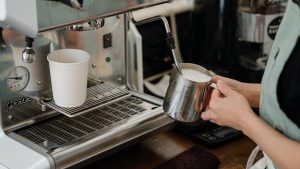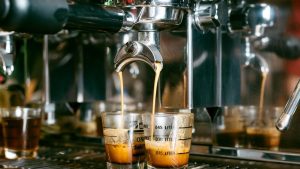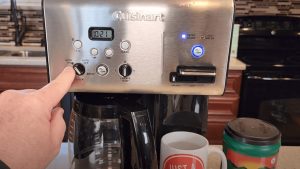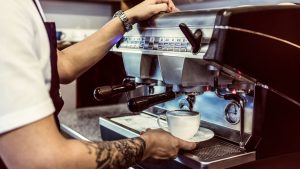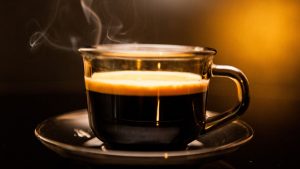what coffee to use in filter coffee In the realm of coffee lovers, the debate over the perfect coffee to use in coffee rages on. If you’re looking to brew the most aromatic and flavorful coffee, you’ve come to the right place. We understand that the choice of coffee beans is crucial, and we’re here to provide you with an expert’s insight into selecting the best coffee for your filter brew. Let’s explore the world of filter coffee and discover the beans that will elevate your morning ritual to a whole new level.
The Art of BrewingFilter Coffee
Before we delve into the types of coffee beans best suited for filter coffee, let’s take a moment to appreciate the art of brewing this beloved beverage. Filter coffee, also known as drip coffee, is a method that allows hot water to pass through ground coffee beans, extracting the rich flavors and aromas as it drips into a pot or carafe. This method offers a cleaner, lighter coffee that’s full of nuance and subtlety, making it a favorite for those who enjoy a milder, less acidic cup of joe.
The Importance of Choosing the Right Coffee Beans
The quality of your filter coffee largely depends on the beans you choose. Coffee beans are not created equal, and different varieties offer distinct flavor profiles and characteristics. When selecting coffee for filter coffee, here’s what you should consider:
Bean Variety
- Arabica: This is the king of coffee beans, known for its smooth and mild flavor. Arabica beans are often the top choice for filter coffee enthusiasts due to their well-balanced acidity and sweet, nuanced notes. If you crave a coffee with floral or fruity undertones, Arabica beans are your best bet.
- Robusta: Robusta beans have a more robust and bold flavor profile with a higher caffeine content. They are less favored for filter coffee due to their stronger, earthy taste and bitterness. However, if you prefer a caffeine kick and a stronger brew, Robusta beans might be your choice.
Roast Level
- Light Roast: Lightly roasted beans maintain their origin’s unique flavors and are perfect for showcasing the coffee’s natural characteristics. The light roast is an excellent choice for those who want to savor the nuanced taste of the beans.
- Medium Roast: This roast level strikes a balance between flavor and body. It offers a more rounded taste, making it a popular choice among filter coffee lovers.
- Dark Roast: Dark roasted beans have a bold and smoky flavor with lower acidity. While they are more suited for espresso, some enjoy the deep, rich taste they bring to their filter coffee.
Origin Matters
The geographical origin of coffee beans also plays a significant role in the flavor profile. Coffee beans from different regions can have vastly different tastes, so it’s essential to consider where your coffee hails from:
- Central America: Coffee from this region often boasts bright acidity and floral notes. It’s an excellent choice for those who enjoy a clean and fruity cup.
- South America: Coffee from South American countries, such as Colombia and Brazil, is known for its mild, nutty flavors. These beans create a well-balanced, easy-drinking coffee.
- Africa: African coffee beans, like those from Ethiopia, offer a burst of fruity and floral notes, often accompanied by a tea-like quality. They’re ideal for those who want an exotic coffee experience.
- Asia: Asian coffee, particularly beans from Sumatra, has a deep, earthy profile with herbal undertones. It’s a great option for those who prefer a more robust and full-bodied cup.
Blends or Single Origin
Deciding whether to go for single-origin or blended coffee is another important consideration. Single-origin coffee highlights the specific characteristics of beans from a particular region, while blends combine beans from various origins to create a unique flavor profile. The choice between the two depends on your preference for consistency or the desire to explore different flavor profiles.
The Perfect Grind Size
For filter coffee, a medium grind size is ideal. This allows the hot water to extract the flavors evenly, resulting in a well-balanced cup. Avoid extremely fine or coarse grinds, as they can lead to over-extraction or under-extraction, affecting the taste.
Brewing the Perfect Filter Coffee
Now that we’ve discussed the importance of coffee bean selection for your filter coffee, let’s dive deeper into the brewing process. To achieve the perfect cup, follow these essential steps:
Equipment Matters
- Coffee Grinder: Invest in a good-quality burr grinder to ensure consistency in grind size. As mentioned earlier, a medium grind is optimal for filtering coffee.
- Water Quality: Use filtered or bottled water if your tap water has an unpleasant taste. The quality of water significantly affects the final taste of your coffee.
- Coffee Maker: Choose a reputable drip coffee maker with precise temperature control and a showerhead-style water dispenser for even saturation of the grounds.
Proper Measurement
To brew the ideal cup of filter coffee, you’ll need to use the right coffee-to-water ratio. A common guideline is one to two tablespoons of coffee per six ounces of water. However, you can adjust this to your taste preferences. Experiment to find the balance that suits you best.
Water Temperature
Water temperature plays a crucial role in extracting the flavors from your chosen coffee beans. It’s recommended to use water between 195°F to 205°F (90°C to 96°C). If your coffee maker doesn’t regulate the temperature, allow the water to cool for a moment after boiling.
Pre-Wetting the Filter
Before adding the ground coffee, pre-wet the filter with hot water. This removes any paper flavor and preheats the brewing vessel. Discard the water before adding the coffee.
Blooming the Coffee
Once the ground coffee is in the filter, pour a small amount of hot water over it, just enough to saturate the grounds. This is known as the “bloom.” Allow it to sit for 30 seconds. Blooming releases carbon dioxide gas from the freshly ground coffee, resulting in a more flavorful brew.
Steady Pour
For an even extraction, pour the hot water slowly and steadily in a circular motion, ensuring all the coffee grounds are saturated. Avoid pouring water directly onto the sides of the filter to prevent over-extraction.
Patience Is a Virtue
Let your coffee drip slowly and consistently. Avoid the temptation to rush the process. A well-brewed filter coffee takes time and patience, but the end result is worth it.
Experiment and Taste
Each coffee bean, roast level, and grind size may require slight adjustments in brewing time and techniques. Be open to experimentation and adjust to your personal taste. The more you brew, the better you’ll understand how to perfect your cup.
(FAQs) about coffee and the choice
1. What is filter coffee, and how does it differ from other coffee brewing methods?
Filter coffee, also known as drip coffee, is a method of brewing coffee that involves passing hot water through ground coffee beans, allowing it to drip into a pot or carafe. It differs from methods like espresso, which uses pressure, resulting in a milder, less concentrated coffee with a cleaner taste.
2. What are the main factors to consider when choosing coffee beans for filter coffee?
The primary factors to consider when selecting coffee beans for coffee are the bean variety (Arabica or Robusta), roast level, origin, and whether you prefer single-origin or blends. The right combination can significantly impact the flavor and aroma of your brew.
3. Which coffee bean variety is better for filter coffee: Arabica or Robusta?
The choice between Arabica and Robusta depends on your taste preferences. Arabica beans are known for their smooth and mild flavor with nuanced notes, making them a favorite for coffee. Robusta beans have a bolder, stronger taste and higher caffeine content, suitable for those who prefer a more intense brew.
4. How does the roast level of coffee beans affect the flavor of filter coffee?
The roast level influences the flavor profile of the coffee. Light roast preserves the unique flavors of the beans, while medium roast offers a balanced taste, and dark roast results in a bolder, smoky flavor with lower acidity. Choose a roast level that aligns with your taste preferences.
5. Can you recommend a specific grind size for filter coffee, and why is it important?
For coffee, a medium grind size is recommended. It allows hot water to extract flavors evenly, resulting in a well-balanced cup. Avoid extremely fine or coarse grinds, as they can lead to over-extraction or under-extraction, affecting the taste.
Conclusion
In the world of coffee, your choice of beans is paramount, and when it comes to filter coffee, the right selection can make all the difference. Whether you’re a fan of the subtle nuances of Arabica or the bold kick of Robusta, the art of filter coffee allows you to explore a world of flavors. Remember to consider the roast level, origin, and whether you prefer single-origin or blends when making your choice. With the perfect grind size, you’re on your way to brewing the ultimate cup of filter coffee.
So, the next time you’re pondering what coffee to use in your coffee maker, refer to this comprehensive guide to make an informed decision. Your mornings are about to get a whole lot better.


